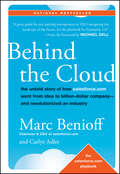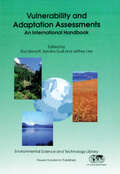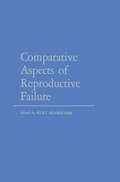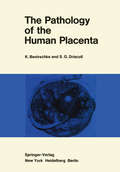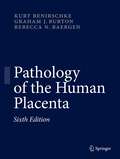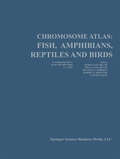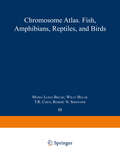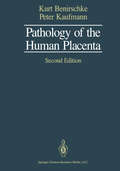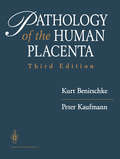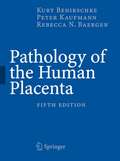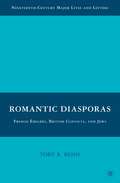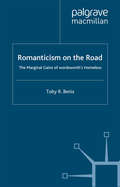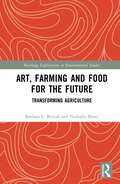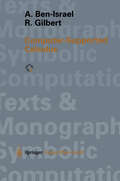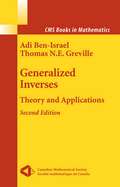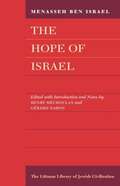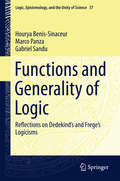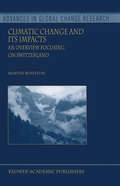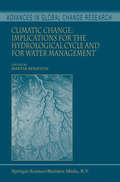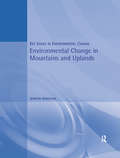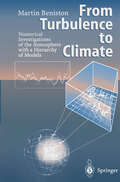- Table View
- List View
City of Thieves: A Novel
by David BenioffFrom the writer of the award-winning Game of Thrones series for HBO based on the books of George R. R. Martin.'David Benioff is an exceptional storyteller . . . CITY OF THIEVES is tender, illuminating, and, be warned, often shocking.' Khaled HosseiniFour months into the siege of Leningrad, the city is starving. Seventeen-year-old Lev fears for his life when he is arrested for looting the body of a dead German paratrooper, while his charismatic cellmate, Kolya, a handsome young soldier arrested for desertion, seems bizarrely unafraid.Dawn brings, instead of an execution squad, an impossible challenge. Lev and Kolya can find a dozen eggs for an NKVD colonel to use for his daughter's wedding cake, and live. Or fail, and die.In the depths of the coldest winter in history, through a city cut off from all supplies and suffering appalling deprivation, man and boy embark on an absurd hunt. Their search will take them through desolate, lawless Leningrad and the devastated countryside surrounding it, in the captivating journey of two men trying to survive against desperate odds.
Behind the Cloud: The Untold Story of How Salesforce.com Went from Idea to Billion-Dollar Company-and Revolutionized an Industry
by Marc Benioff Carlye AdlerHow did salesforce.com grow from a start up in a rented apartment into the world's fastest growing software company in less than a decade? For the first time, Marc Benioff, the visionary founder, chairman and CEO of salesforce.com, tells how he and his team created and used new business, technology, and philanthropic models tailored to this time of extraordinary change. Showing how salesforce.com not only survived the dotcom implosion of 2001, but went on to define itself as the leader of the cloud computing revolution and spark a $46-billion dollar industry, Benioff's story will help business leaders and entrepreneurs stand out, innovate better, and grow faster in any economic climate. In Behind the Cloud, Benioff shares the strategies that have inspired employees, turned customers into evangelists, leveraged an ecosystem of partners, and allowed innovation to flourish.
Behind the Cloud: The Untold Story of How Salesforce.com Went from Idea to Billion-Dollar Company-and Revolutionized an Industry
by Marc Benioff Carlye AdlerHow did salesforce.com grow from a start up in a rented apartment into the world's fastest growing software company in less than a decade? For the first time, Marc Benioff, the visionary founder, chairman and CEO of salesforce.com, tells how he and his team created and used new business, technology, and philanthropic models tailored to this time of extraordinary change. Showing how salesforce.com not only survived the dotcom implosion of 2001, but went on to define itself as the leader of the cloud computing revolution and spark a $46-billion dollar industry, Benioff's story will help business leaders and entrepreneurs stand out, innovate better, and grow faster in any economic climate. In Behind the Cloud, Benioff shares the strategies that have inspired employees, turned customers into evangelists, leveraged an ecosystem of partners, and allowed innovation to flourish.
Vulnerability and Adaptation Assessments: An International Handbook (Environmental Science and Technology Library #7)
by Ron Benioff Sandra Guill Jeffrey LeeThe possible impacts of global climate change on different countries has led to the development and ratification of the Framework Convention on Climate Change (FCCC) and has a strong bearing on the future sustainable development of developing countries and countries with economies in transition. The preparation of analytical methodologies and tools for carrying out assessments of vulnerability and adaptation to climate change is therefore of prime importance to these countries. Such assessments are needed to both fulfill the reporting requirements of the countries under the FCCC as well as to prepare their own climate change adaptation and mitigation plans. The vulnerability and adaptation assessment guidelines prepared by the U.S. Country Studies Program bring together all the latest knowledge and experience from around the world on both vulnerability analysis as well as adaptation methodologies. It is currently being applied successfully by scientists in over fifty countries from all the regions of the globe. This guidance is being published to share it with the wider scientific community interested in global climate change issues. This guidance document has two primary purposes: • To assist countries in making decisions about the scope and methods for their vulnerability and adaptation assessments, • To provide countries with guidance and step-by-step instructions on each of the basic elements of vulnerability and adaptation assessments.
Comparative Aspects of Reproductive Failure: An International Conference at Dartmouth Medical School, Hanover, N.H.—July 25–29, 1966
by K. BenirschkeTo many, the contents of this conference may not seem appropriate at a time when the minds are preoccupied with a "population explosion." To the participants and guests of this conference, however, this was a week of fascinating discussions. While quantitative aspects of reproduc tion were touched upon, it was mostly a search for an understanding of the qualitative aspects of reproduction and its failure. Only when we understand these more completely will it be possible to render optimum care and have the foundations for meaningful population control. The conference was conceived in discussions at the Committee on Pathology of the National Academy of Sciences, W"ashington, in 1965. It was felt that investigators in medicine and the veterinary fields would profit greatly from a closer liaison. All too frequently, we work relatively isolated in our respective fields and, with the burgeoning information filling our journals, we have not enough time and leisure to stand back and attempt a comparative look at the subject of study. Often we are not familiar with the techniques other disciplines use, and which we could well employ to great advantage. ,,yhile this applies to many aspects of medicine, a comparative approach to the study of reproductive failure seemed most advantageous at this time.
The Pathology of the Human Placenta
by KURT BENIRSCHKEThis presentation of the diseases of the placenta differs in many ways from the first such treatment in these volumes by the eminent Robert Meyer. It is a deliberate attempt to bring together the practical information which has been gathered about the pathology of this complex organ and to make it available to the practicing pathologist as well as clinician. Despite the ready availability of the placenta for study, the pathologist is often ill-prepared to interpret lesions which he may find. Moreover, it has been difficult for him to find reference material, published commonly in journals and books with which he is not familiar. Further more, the interpretation of lesions affecting the placenta seemed less challenging since the organ had served its function, was to be discarded and presumably little of significance could be expected from such a retrospective study. Recently, with new emphasis on maternal and fetal health and disease, it has become apparent that knowledge of pathologic changes in the placenta often provides a unique insight into antenatal events. Thus, there has been an abundance of publications in this field in recent years, several in book form. These and the most important older investigations on the morbid anatomy of the human pla centa are here reviewed. This book has been written with a special point of view, however, which reflects our own bias.
Pathology of the Human Placenta
by Kurt Benirschke Graham J. Burton Rebecca N BaergenPathology of the Human Placenta remains the most comprehensive and authoritative text in the field. It provides extensive information on the normal placenta, encompassing physiology, metabolism, and endocrinology, and covers the full range of placental diseases in great detail. Further chapters are devoted to abortions, molar pregnancies, multiple pregnancies, and legal considerations. This sixth edition of the book has been extensively revised and expanded to reflect the most recent progress in the field, and a brand new chapter has been added on artificial reproductive technology. Some 800 illustrations are included, many of them in color. The detailed index has been further improved and tables updated. Pathology of the Human Placenta will be of enormous value to pathologists and obstetrician-gynecologists alike.
Chromosome Atlas: Volume 2
by Kurt Benirschke Tao C. Hsu M. L. Becak W. Becak F. L. Roberts Shoffner E. P. VolpeSince the publication of the first Atlas of Mammalian Chromosomes in 1967 the continuous compilation of mammalian karyotypes has become a useful instrument in cytologic and taxonomic studies. Technical advances in preparing mitotic cells from nonmammalian vertebrates have since allowed a better comparison of taxa in fishes, amphibia, reptiles, and birds. In these fields the literature is also widely scat tered; and it has become difficult to survey such information, published as well as unpublished, by nonspecialists. These were among the reasons for the new endeavor of compiling a chromosome atlas for nonmammalian vertebrates. An annual publication is planned with presentation of between 10 and 15 karyotypes from each class. In this second volume, 52 species are presented. For convenience in future colation, the numbering system employs class abbreviations, viz. , P-Pisces, Am-Amphibia, R-Reptilia, and Av-Aves. Within each class, the numbers are necessarily consecutive. In general the karyotypes are laid out following the format employed in An Atlas of Mammalian Chromosomes. Whenever possible both sexes are represented, even though sexual chromosomal dimorphism is not (currently) evident. When the sex chromosomes are known, they are so indicated by conventional nomenclature (XX/XY or ZW /ZZ). In the karyotypes of birds the so-called microchromosomes are grouped together at the end without an attempt at complete enumeration, which is presently impossible. They are usually considered as acrocentrics, but a few are distinctly biarmed.
Chromosome Atlas: Volume 3
by Kurt Benirschke Tao C. Hsu M. L. Becak W. Becak F. L. Roberts Shoffner E. P. VolpePathology of the Human Placenta
by Kurt Benirschke Peter KaufmannThis is a completely new, second edition of the classic reference which has been out of print since 1984. It is the most comprehensive work available on placental pathology, which has recently gained importance in clinical medicine, and includes discussion of legal aspects dealing with the relation between placenta and perinatal damage.
Pathology of the Human Placenta
by Kurt Benirschke Peter KaufmannCompletey reorganized - a practical, how-to guide to placental examination plus the most authoritative reference available on all aspects of the normal and abnormal placenta. New chapters have been added on: Normative Values and Tables, Microscopic Survey and Histopathological Approach to Villous Alterations. More extensive indexing help meet the daily demands of bothe novice and experienced placental pathologists.
Pathology of the Human Placenta, 5th Edition
by Kurt Benirschke Peter Kaufmann Rebecca N BaergenPathology of the Human Placenta remains the authoritative text in the field and is respected and used by pathologists and obstetrician-gynecologists alike. This fifth edition reflects new advances in the field and includes 800 illustrations, 173 of them in color. The detailed index has been improved and the tables updated. Defined terms are highlighted in bold for easy identification, and further findings are discussed in small type throughout each chapter. Advances in genetics and molecular biology continue to make the study of the placenta one of vast diagnostic and legal importance.
Romantic Diasporas: French Émigrés, British Convicts, and Jews (Nineteenth-Century Major Lives and Letters)
by T. BenisRomantic Diasporasexamines exile in the Romantic period fromthe different perspectives of French émigrés in England, British convicts transported to Australia, and Jews in their perennial diaspora.
Romanticism on the Road: The Marginal Gains of Wordsworth's Homeless (Romanticism in Perspective:Texts, Cultures, Histories)
by T. BenisRomanticism on the Road challenges critical orthodoxy by arguing that Wordsworth rejected the political dogmas of his age. Refusing to ally with either radicals or conservatives after the French Revolution, the poet seizes on vagrants to attack the binary thinking dominating public affairs and to question the value of the Georgian domestic ideal. Drawing on current and historical discussions of homelessness, the study offers a cultural history of vagrancy and explains why Wordsworth chose the homeless to bear his message.
Art, Farming and Food for the Future: Transforming Agriculture (Routledge Explorations in Environmental Studies)
by Barbara L. Benish Nathalie BlancThis book explores the impact of artistic experiments in inspiring people to turn away from current food consumerism and take an active role in preserving, sustaining, and protecting the environment. As artists are expanding their practice into social justice and community concerns, erasing traditional forms of expression and integrating others, the culture around food and its production has been added to a new vocabulary of experiential art. The authors measure the impact of such experiments on local food consumption and production, focusing on education and youth, both in the surrounding community and culture at large. They suggest how these projects can be up-scaled to further encourage sustainable solutions for our environment and communities. The book explores the reflections and motivations of case study practitioners in urban and rural areas and, through interviews, engages with artists who are pioneering a new trend to create hubs of activity away from traditional art spaces in cities to follow a non-hierarchal practice that is de-centralized and communally based. This book will be of great interest to academic readers concerned with issues related to environmental aesthetics, eco-design, eco-criticism, culture, heritage, memory, and identity, and those interested in the current debates on the place of aesthetics and culture in sustainability.
Art, Farming and Food for the Future: Transforming Agriculture (Routledge Explorations in Environmental Studies)
by Barbara L. Benish Nathalie BlancThis book explores the impact of artistic experiments in inspiring people to turn away from current food consumerism and take an active role in preserving, sustaining, and protecting the environment. As artists are expanding their practice into social justice and community concerns, erasing traditional forms of expression and integrating others, the culture around food and its production has been added to a new vocabulary of experiential art. The authors measure the impact of such experiments on local food consumption and production, focusing on education and youth, both in the surrounding community and culture at large. They suggest how these projects can be up-scaled to further encourage sustainable solutions for our environment and communities. The book explores the reflections and motivations of case study practitioners in urban and rural areas and, through interviews, engages with artists who are pioneering a new trend to create hubs of activity away from traditional art spaces in cities to follow a non-hierarchal practice that is de-centralized and communally based. This book will be of great interest to academic readers concerned with issues related to environmental aesthetics, eco-design, eco-criticism, culture, heritage, memory, and identity, and those interested in the current debates on the place of aesthetics and culture in sustainability.
Computer-Supported Calculus (Texts & Monographs in Symbolic Computation)
by A. Ben-Israel R. GilbertThis is a new type of calculus book: Students who master this text will be well versed in calculus and, in addition, possess a useful working knowledge of one of the most important mathematical software systems, namely, MACSYMA. This will equip them with the mathematical competence they need for science and engi neering and the competitive workplace. The choice of MACSYMA is not essential for the didactic goal of the book. In fact, any of the other major mathematical software systems, e. g. , AXIOM, MATHEMATICA, MAPLE, DERIVE, or REDUCE, could have been taken for the examples and for acquiring the skill in using these systems for doing mathematics on computers. The symbolic and numerical calcu lations described in this book will be easily performed in any of these systems by slight modification of the syntax as soon as the student understands and masters the MACSYMA examples in this book. What is important, however, is that the student gets all the information necessary to design and execute the calculations in at least one concrete implementation language as this is done in this book and also that the use of the mathematical software system is completely integrated with the text. In these times of globalization, firms which are unable to hire adequately trained technology experts will not prosper. For corporations which depend heavily on sci ence and engineering, remaining competitive in the global economy will require hiring employees having had a traditionally rigorous mathematical education.
Generalized Inverses: Theory and Applications (CMS Books in Mathematics)
by Adi Ben-Israel Thomas N.E. GrevilleThis second edition accounts for many major developments in generalized inverses while maintaining the informal and leisurely style of the 1974 first edition. Added material includes a chapter on applications, new exercises, and an appendix on the work of E.H. Moore.
The Hope of Israel (The Littman Library of Jewish Civilization)
by Menasseh Ben-IsraelWhen The Hope of Israel was translated into English in 1652, its argument from Scripture that messianic redemption would not come to the Jewish people until they were scattered in all the corners of the Earth aroused great interest and played an instrumental part in the discussions in the Commonwealth under Cromwell which eventually led to the readmission of the Jews in 1656. This edition of that English text includes an introduction and notes which place the work in the intellectual context of its time.
Functions and Generality of Logic: Reflections on Dedekind's and Frege's Logicisms (Logic, Epistemology, and the Unity of Science #37)
by Hourya Benis-Sinaceur Marco Panza Gabriel SanduThis book examines three connected aspects of Frege’s logicism: the differences between Dedekind’s and Frege’s interpretation of the term ‘logic’ and related terms and reflects on Frege’s notion of function, comparing its understanding and the role it played in Frege’s and Lagrange’s foundational programs. It concludes with an examination of the notion of arbitrary function, taking into account Frege’s, Ramsey’s and Russell’s view on the subject. Composed of three chapters, this book sheds light on important aspects of Dedekind’s and Frege’s logicisms. The first chapter explains how, although he shares Frege’s aim at substituting logical standards of rigor to intuitive imports from spatio-temporal experience into the deductive presentation of arithmetic, Dedekind had a different goal and used or invented different tools. The chapter highlights basic dissimilarities between Dedekind’s and Frege’s actual ways of doing and thinking. The second chapter reflects on Frege’s notion of a function, in comparison with the notions endorsed by Lagrange and the followers of the program of arithmetization of analysis. It remarks that the foundational programs pursued by Lagrange and Frege are crucially different and based on a different idea of what the foundations of mathematics should be like. However, despite this contrast, the notion of function plays similar roles in the two programs, and this chapter emphasizes the similarities. The third chapter traces the development of thinking about Frege’s program in the foundations of mathematics, and includes comparisons of Frege’s, Russell’s and Ramsey’s views. The chapter discusses earlier papers written by Hintikka, Sandu, Demopoulos and Trueman. Although the chapter’s main focus is on the notion of arbitrary correlation, it starts out by discussing some aspects of the connection between this notion and Dedekind Theorem.
Climatic Change and Its Impacts: An Overview Focusing on Switzerland (Advances in Global Change Research #19)
by Martin BenistonClimatic Change is a rapidly evolving domain that has prompted the publication of numerous scientific works in recent years, reflecting both the public and scientific interest in the topic. This book focuses upon climate processes, variability and change and applies the general principles related to these issues, particularly in Switzerland. Although a small country, Switzerland is characterized by complex topography where climatic processes are often enhanced due to the presence of the Alps. In addition, there is a remarkable density of observational data in both the natural and social sciences that enable a comprehensive assessment of climate processes, their long-term trends and their impacts. This book draws upon recent scientific work by the author, as well as by close colleagues working within scientific networks both in Switzerland and Europe, in order to provide the reader with up-to-date information on climate processes in the course of the 20th and 21st centuries. This book is intended for students from the undergraduate level onwards and researchers interested in climate issues specific to the alpine region.
Climatic Change: Implications for the Hydrological Cycle and for Water Management (Advances in Global Change Research #10)
by Martin Benistonyear simulations in order to separate noise in the system from the climate change signal. Several contributing papers focused on case studies using Regional Climate Models (RCMs) linked to hydrological models, applied to the analysis of runoff under conditions of convective activity and extreme precipitation, in regions of complex topography, or stakeholder-driven investigations such as water runoff simulations in Quebec undertaken for a major utility. Thorough analyses of GCM results for the Century were reported at the Workshop, in order to illustrate the improvements in model results which have taken place in recent years, and the increasing confidence with which the models can be used for projecting climatic change in coming decades. However, there is still much room for improvement; there is also a need to address more fully the manner in which climate and impacts models (e. g. , hydrological models) can be linked, in terms of consistency and the overlap between different scales, the underlying physical assumptions, and the parameterizations used. Session 2 was devoted to the two extremes of water resources, namely floods and droughts, the focus here being to identify the climate change component in river floods. These have significant economic implications, as was shown by several scientists from Western and Central Europe. Many long time series have been studied worldwide with the aim of detection of nonstationarities, yet there is no conclusive evidence of climate-related changes in flow records, in general.
Environmental Change in Mountains and Uplands (Key Issues in Environmental Change)
by Martin BenistonMountain environments are often perceived to be austere, isolated, and inhospitable. In fact, these areas are of immense value to mankind, providing direct life support to close to 10 percent of the world's population and sustaining a wide variety of species - many of which are endemic to this environment.'Environmental Change in Mountains and Uplands' provides detailed account of the fragile and marginal physical and socio-economic systems which make up the world's mountain regions. Discussing the direct and indirect impacts of human interference on environmental ecosystems, it then turns to the social and economic consequences of such environmental change - both upon the mountain environment itself and upon the populations who depend on mountain resources for their economic sustenance.This book includes a review of possible implications for adaption and mitigation strategies in a global context. Working within a broad temporal scale, it draws upon paleoenvironmental records to document past changes which have occured in the absence of major anthropogenic influences, as well as utilising modelling as a means to assessing future environmental change.
Environmental Change in Mountains and Uplands (Key Issues in Environmental Change)
by Martin BenistonMountain environments are often perceived to be austere, isolated, and inhospitable. In fact, these areas are of immense value to mankind, providing direct life support to close to 10 percent of the world's population and sustaining a wide variety of species - many of which are endemic to this environment.'Environmental Change in Mountains and Uplands' provides detailed account of the fragile and marginal physical and socio-economic systems which make up the world's mountain regions. Discussing the direct and indirect impacts of human interference on environmental ecosystems, it then turns to the social and economic consequences of such environmental change - both upon the mountain environment itself and upon the populations who depend on mountain resources for their economic sustenance.This book includes a review of possible implications for adaption and mitigation strategies in a global context. Working within a broad temporal scale, it draws upon paleoenvironmental records to document past changes which have occured in the absence of major anthropogenic influences, as well as utilising modelling as a means to assessing future environmental change.

